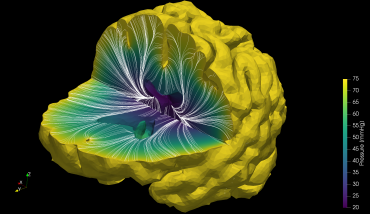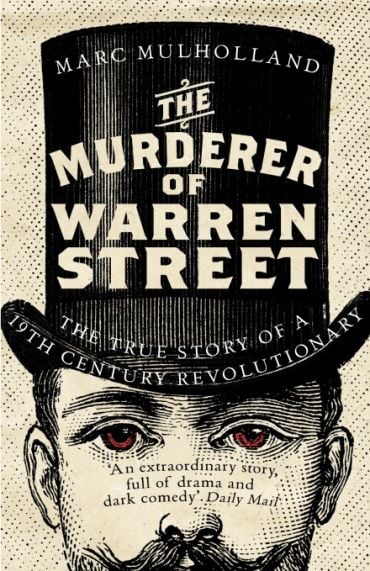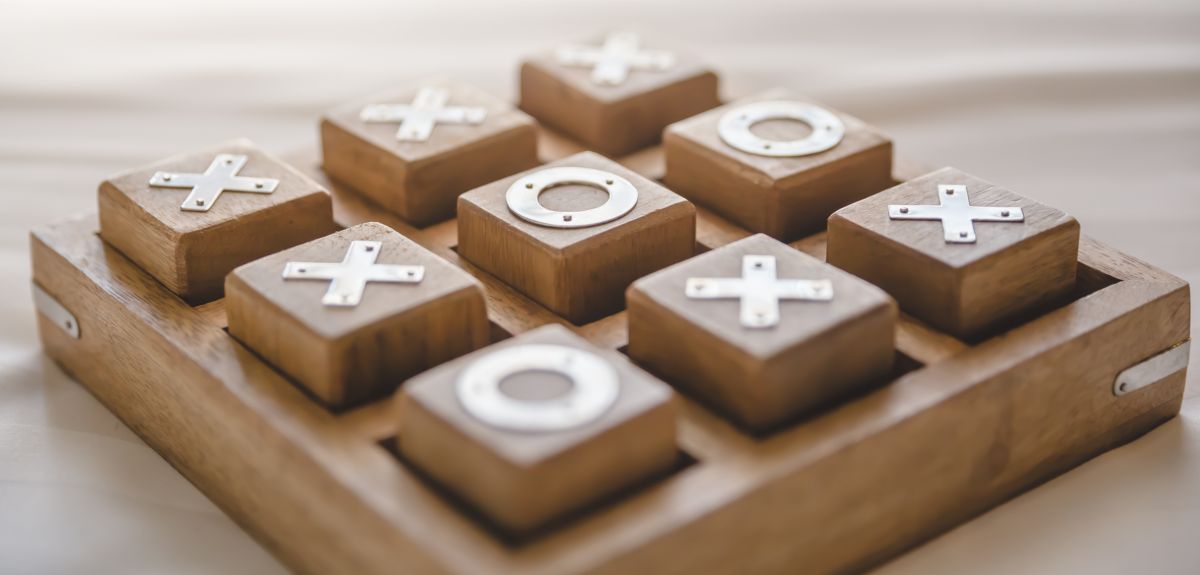Features
By Dr Wahbi El-Bouri
There are over 1.2 million stroke survivors in the UK, with 100,000 strokes happening in the UK each year. That’s the equivalent of one stroke every five minutes. They are also the leading cause of disability in the Western world.
Research underway in the Department of Engineering Science’s Cerebral Haemodynamics Group, headed up by Professor Stephen Payne, is changing our understanding of blood flow around the brain. Here, I explain how this could speed up the arduous process of bringing stroke drugs to market.
Our research has two main questions. Firstly, can we model blood and oxygen transport in the entire human brain, across the billions of blood vessels present? And secondly, can we run in-silico clinical trials (that is, trials performed entirely on a computer) of stroke and stroke treatment?
This is what we are tackling as part of a Horizon 2020 project (In-Silico Trials for Treatment of Acute Ischaemic Stroke) alongside European research collaborators from 10 other institutes, including radiotherapists, clinicians, academics, and industrial partners.
A continuous supply of oxygen and glucose, via the bloodstream, is essential to maintain healthy brain function under all circumstances. Whereas the rest of our body can release stored-up energy when we feel hungry, the brain has no such reserves. As such, any reduction in blood flow to the brain, even if only for a few minutes, can lead to cell death and loss of brain function. A large reduction of blood flow for a prolonged period of time, whether through a blocked or ruptured vessel, is known as a stroke.
In addition, dementia (the leading cause of death in the UK) is increasingly being linked to changes in our smallest blood vessels, or microvasculature, as we age. There is clearly an urgent need to understand the mechanisms of stroke and brain ageing in order to combat these debilitating diseases.
 Capiliary velocity
Capiliary velocityThe starting point for these models must be real-life data. Unfortunately, due to the low resolution of current clinical imaging modalities, the only way we can currently ‘see’ the smallest vessels in the brain (which average 1/10th the width of a human hair) is to image slices of dead human brains. Using these, researchers construct networks on a computer and simulate blood and oxygen transport. However, we quickly run into the problem of scaling up these networks to encompass the billions of blood vessels that make up the human brain.
Our team is using mathematical tools developed for use in the oil and gas industry, who have been trying to model water and oil flow through rock for decades. We treat the brain as a chunk of porous rock and hence approximate the flow through our brain, as opposed to modelling the flow in each individual vessel. This allows us to rapidly produce full brain computer models of blood and oxygen transport!
The models that we are developing, along with models of clot formation, clot removal using a stent and thrombolysis (dissolving the clot with drugs), will be used to run clinical trials on computers that can be personalised and help to inform real-life clinical trials. For example, certain geometries of blood vessels or certain clot positions may be more amenable to a certain treatment.
This knowledge, from the in-silico clinical trial, can then inform a real-life trial to target treatment to those people and hence improve the chances of that stroke treatment being brought to market and used to save lives. In the future, these models could be used to simulate a variety of neurological diseases and help us to understand the human brain, in both health and disease.
Read more about the Cerebral Haemodynamics Group’s research.
Find out more about Brain Awareness Week at Oxford.
This article was published to mark Brain Awareness Week, a global campaign running from 11-17 March.
The concept of equilibrium is one of the most central ideas in economics. It is one of the core assumptions in the vast majority of economic models, including models used by policymakers on issues ranging from monetary policy to climate change, trade policy and the minimum wage. But is it a good assumption? In a recently-published Science Advances paper, Marco Pangallo, Torsten Heinrich and Doyne Farmer from the University of Oxford, investigate this question in the simple framework of games, and show that when the game gets complicated this assumption is problematic. If these results carry over from games to economics, this raises deep questions about when economics models are useful to understand the real world.
Kids love to play tic-tac-toe, aka noughts and crosses, but when they are about 8 years old they learn that there is a strategy for the second player that always results in a draw. This strategy is what is called an equilibrium in economics. If all the players in the game are rational they will play an equilibrium strategy. In economics, the word rational means that the player can evaluate every possible move and explore its consequences to their endpoint and choose the best move. Once kids are old enough to discover the equilibrium of tic-tac-toe they quit playing because the same thing always happens and the game is really boring. One way to view this is that, for the purposes of understanding how children play tic-tac-toe, rationality is a good behavioural model for eight year olds but not for six year olds.
In a more complicated game like chess, rationality is never a good behavioural model. The problem is that chess is a much harder game, hard enough that no one can analyse all the possibilities, and the usefulness of the concept of equilibrium breaks down. In chess no one is smart enough to discover the equilibrium, and so the game never gets boring. This illustrates that whether or not rationality is a sensible model of the behaviour of real people depends on the problem they have to solve. If the problem is simple, it is a good behavioural model, but if the problem is hard, it may break down.
Doyne Farmer, Professor of Mathematics at the University of Oxford, said: ‘Many of the problems encountered by economic actors are too complicated to model easily using a normal form game. Nonetheless, this work suggests a potentially serious problem. Many situations in economics are complicated and competitive. Our research raises the possibility that many important theories in economics may be wrong. If the key behavioural assumption of equilibrium is wrong, then the predictions of the model are likely to be wrong too. In this case new approaches are required that explicitly simulate the behaviour of the players and take into account the fact that real people are not good at solving complicated problems.’
Theories in economics nearly universally assume equilibrium from the outset. But is this always a reasonable thing to do? To get insight into this question, the researchers studied when equilibrium is a good assumption in games. They didn’t just study games like tic-tac-toe or chess, but rather they studied all possible games of a certain type (called normal form games). They made up games at random and had two simulated players play them to see what happens. The simulated players used strategies that do a good job of describing what real people do in psychology experiments. These strategies are simple rules of thumb, like doing what has worked well in the past or picking the move that is most likely to beat the opponent’s recent moves.
The researchers demonstrated that the intuition about tic-tac-toe vs. chess holds up in general, but with a new twist. When the game is simple enough, rationality is a good behavioural model: players easily find the equilibrium strategy and play it. When the game is more complicated, whether or not the strategies will converge to equilibrium depends on whether or not the game is competitive. If the incentives of the players are lined up they are likely to find the equilibrium strategy, even if the game is complicated. But when the incentives of the players are not lined up and the game gets complicated, they are unlikely to find the equilibrium. When this happens their strategies always keep changing in time, usually chaotically, and they never settle down to the equilibrium. In these cases equilibrium is a poor behavioural model.
A key insight from the research is that cycles in the logical structure of the game influence the convergence to equilibrium. The researchers analyse what happens when both players are myopic, and play their best response to the last move of the other player. In some cases this results in convergence to equilibrium, where the two players settle on their best move and play it again and again forever. However, in other cases the sequence of moves never settles down and instead follows a best reply cycle, in which the players’ moves keep changing but periodically repeat – like “ground hog day” over and over again. When a game has best reply cycles convergence to equilibrium becomes less likely.
Using this result the authors have been able to derive quantitative formulas for when the players of the game will converge to equilibrium and when they won’t, and show explicitly that in complicated and competitive games cycles are prevalent and convergence to equilibrium is unlikely.
Read the full paper: 'Best reply structure and equilibrium convergence in generic games' in Science Advances.
To mark rare disease day, Dr Noemi Roy talks about a two year project working with patients with rare forms of anaemia, and how she hopes this will translate into research in this area.
Rare Disease Day. It’s only one day, right? Like yesterday was International Polar Bear day, and tomorrow will be Employee Appreciation Day. Now, I have nothing against polar bears, and I’m all for appreciating employees. But let’s spend more than a day thinking about rare diseases. Rare diseases sound, well, rare, and “nothing to do with me, really.”
In fact, there are “over 6,000 rare diseases that affect over 300 million people worldwide”. This works out to 1 in 17 people being affected by a rare disease at some point in their life.
I am a researcher at the MRC Weatherall Institute of Molecular Medicine at the University of Oxford, but also a clinician looking after patients with rare inherited anaemias. These patients are born with a genetic abnormality that means they either can’t make red blood cells at all, can’t make enough normal ones, or their red blood cells are fragile and get destroyed too early. Not enough red blood cells means not enough oxygen to the body. Some patients suffer with fatigue and weakness and can’t keep up with their peers in normal daily activities, while others need blood transfusions. At the worst end of the spectrum are patients whose lives depend on blood transfusions every three weeks from birth.
Research into rare anaemias (as with all rare diseases) is poorly funded. Furthermore, patients’ opinions about what aspect of their condition warrants most urgent research are not heard. Mostly because nobody has asked them, or perhaps no one has thought to ask. Perhaps there is worry that the issues raised may be inconvenient for doctors and researchers alike. Whether conditions are common or rare, the research agenda (the hypotheses being tested) is set by the researchers themselves or pharmaceutical companies. All on behalf of the patients, of course. But doing things on behalf of the patients is no longer acceptable- we need to do things with patients.
Hard work
There are a lot of valid concerns raised about asking patients for what they think the research questions should be for their condition. Which patients are we asking exactly? How do we know they are representative of all the patients with that condition? How will patients know enough about fundamental science to even raise some critical issues that warrant research for new therapies to be discovered?
Even so, a nation-wide survey into topics identified by patients as being priorities topics for conditions they live day with everyday out has yielded important results. One method of carrying this out is via a James Lind alliance Priority Setting partnership. These partnerships have been used to gather patient-driven research priorities in over 90 conditions ranging from acne, through to depression, stillbirths and schizophrenia. Interestingly, a common theme in all the results from these surveys is that patients repeatedly say that they want further research into how their quality of life can be improved and symptoms controlled, rather than research on just finding a new cure.
In 2016, we set about carrying out a James Lind Alliance Priority Setting Partnership survey into rare inherited anaemias.
I won’t lie, it is hard work. It is very time consuming and because it’s done in partnership with patients, it follows a different format compared to a group of doctors getting together and doing the same thing on their own.
But the whole point is that the end result is different from what it would be if it was doctor-driven. Not only different, but better.
We put together a steering committee of patients, patient support groups, carers, charities, doctors and researchers, and then ran a nation-wide survey asking patients and doctors what they thought were the key questions that should feature on the research agenda. Once we received about 500 answers, we sifted through them to remove anything out of scope and grouped similar questions together. This left us with 75 questions.
We then ran another, separate survey asking people to prioritise all 75 of these research priorities, ending up with 25 key questions. Our project culminated in a one-day workshop where patients, carers, charity representatives and doctors discussed and debated the merits of all 25 questions and came up with a mutually agreed Top 10.
Very nice, beautiful. A lovely list. Developed with patients. We can feel good about ourselves.
But what next? Well, research money needs to be funnelled into projects that address these topics. Part of that will rely on the funding bodies preferentially giving money to projects that tackle these questions. Part of that will depend on charities and patient organisations fundraising specifically for these questions to be answered.
And part of that will result from a change in culture. Because everyone who participated in this project came out a different person. During the 2 years working together and at the final workshop, I heard doctors telling patients they hadn’t realised how important some symptoms were to their lives, and I saw doctors change their opinions after listening to patients. Not only in a specific scenario, but more generally in their attitude to patient involvement in research. Likewise I saw patients grow in confidence and start to believe that they can change the way things are done and the path of research in the future.
I will end with a patient’s voice- someone who was part of this two-year process:
'I can help future generations and raise the profile of rare anaemias. This work makes me feel like I have a part to play and that even though you’ve got a rare condition, you can still make a difference' - Rachel
In his new book, The Murderer of Warren Street, Professor Marc Mulholland, a professor of modern history at St Catherine's College, Oxford, reveals the true story of the notorious 19th-century revolutionary Emmanuel Barthélemy. This article, first published in the Irish Times, focuses on the last fatal duel held in England...
By Marc Mulholland
On a foggy morning in October 1852, two French men stopped at one of England’s great beauty spots, Priest Hill, a viewpoint near Windsor rising above the Vale of the Thames. Both were revolutionary republicans, socialists, and refugees from their home country. They took off their coats, received duelling pistols from their seconds and stood opposite each other. At signal, Frédéric Cournet advanced, took aim, and pulled the trigger.
Frédéric Cournet, was a large man, in his forties, who carried himself with the confidence of a former naval war-hero. He had led courageous resistance on the streets of Paris against the recent coup d’état against the constitution launched by President Louis Napoleon. Cournet had killed a guard to escape his captors and fled to London a wanted man.
Cournet’s duel was with Emmanuel Barthélemy, still in his twenties but with a lifetime’s experiences. Born of the working classes, Barthélemy had been a revolutionary conspirator since the age of sixteen. He had served nine years as a galley-slave after attempting to assassinate a police man. Little daunted, after release he fought as a barricade commander in a major workers’ insurrection against the bourgeois government. Arrested again, Barthélemy made international headlines by his daring escape from the notorious military prison Cherche-Midi in central Paris. Disguised as a priest, he slipped out of the country and made for England.
Why were these comrades of revolution meeting in mortal combat? Fundamentally, they were very different types. Victor Hugo, in his great novel Les Miserables, painted a pen-portrait. Cournet was “a burly broad-shouldered man, red-faced, heavy-fisted, daring and loyal”. He was “intrepid, energetic, irascible and temperamental.” Barthélemy was “thin and puny, sallow-faced and taciturn, a sort of tragic outcast.” Cournet was something of a blowhard. He was well-known as a bully and an inveterate duellist. Barthélemy was a fanatic: disciplined, ruthless, and filled with a cold rage against society.
It was an Irish man and graduate of Trinity College Dublin, Arthur Reeves, who explained the affair to a fascinated public. Reeves, who had spent 22 years living in France as a language tutor, kept company with the French political émigrés in London. The “boiling nature” of French blood, he reported, made them ultra-sensitive “upon the point of honour”. Cournet had spread rumours about Barthélemy’s girlfriend, suggesting she was a prostitute. Most men, knowing Cournet’s reputation, might have turned a deaf ear. For Barthélemy, however, the slight was not just personal. The dignity of his class and his revolutionary enterprise was at stake. Cournet refused to apologise and a duel was inevitable.
 'The Murderer of Warren Street' by Marc Mulholland (Windmill)
'The Murderer of Warren Street' by Marc Mulholland (Windmill)Cournet confidently let loose his fire, but missed his aim. Now it was Barthélemy’s turn. He pulled the trigger, but the gun misfired. He tried again, it misfired again. In a growing frustration of terror, Cournet threw his weapon at Barthélemy’s head. “Use mine!” Barthélemy picked it up, took aim and fired. Cournet fell to the ground, mortally wounded. He died later that night in the nearby Barley Mow Inn. For years afterwards his ghost was reputed to haunt the place.
Barthélemy and the duelling ‘seconds’ - friends and assistants to the ‘principals’ - fled the scene, but the new electric telegraph system sent news ahead, and police arrested them at Waterloo station. They were charged with murder.
Duelling had been a common social practice. Prime Minister William Pitt, the Duke of York, even Daniel O’Connell, the Irish Liberator, had all defended their honour on the field. Though technically a grievous criminal offence, duelling was in effect permitted for aristocrats, officers and gentlemen. It was only denied to the common people. The normal practice was for suspects to be released on bail before being found ‘not guilty’. This had been a republican duel, however, and Barthélemy and his seconds were working class. They were flung in jail to await trial.
Once more a curious Irish connection comes into play. Just a few months before the duel, in July 1852, British soldiers had fired upon a crowd in the small manufacturing town of Sixmilebridge in County Clare, killing six peasants. The occasion had been a tumultuous election assembly, with locals under the leadership of their priests shouting against landlord influence, but there is little evidence that soldiers had been seriously provoked or threatened. British opinion was shocked not by the massacre, however, but by the jury of the coroner’s court bringing in a verdict of ‘wilful murder’ against the soldiers and the magistrate. This should have meant imprisonment of the accused until their criminal trial. Instead the Government-appointed Attorney General intervened to order their release on bail. Shortly afterwards he struck down the coroner’s court verdict.
At the Windsor Assizes, the lawyers defending Barthélemy and the others seized upon this legal chicanery. If soldiers could be released on bail as men of good reputation, they asked, why not these honourable duellists? It was an embarrassing moment for British justice, and a special appeal court had to be convened to adjudicate the point of law.
Unsurprisingly, the defence motion was denied, but in so doing the judges had to state with unprecedented firmness that duelling, in fact, was not a crime to be mitigated by honour. It could no longer be winked at as a suitable affair for gentlemen. An important principle had been established. This, as it turned out, would be the last fatal duel ever to be fought on these islands.
Barthélemy and the others were held on bail, went to trial, and were found guilty. The jury, however, brought in a verdict of manslaughter and the sentence was a mere six months. Barthelemy’s extraordinary career was far from over. Upon release, he planned the crime of the century - to assassinate Louis Napoleon, now Napoleon III, Emperor of the French. His furious temper got the better of him, however, and when his employer resisted Barthelemy’s attempt to extort revolutionary funds, a fatal fight ensued. In January 1855, in the falling snow, Barthelemy was hanged for murder outside Debtors’ Gate at Newgate prison.
The Murderer of Warren Street by Marc Mulholland is published in paperback by Windmill.
The 2019 Novozymes Prize of DKK 3 million is being awarded to Professor Dame Carol Robinson at the Department of Chemistry, University of Oxford, for her scientific breakthroughs in use of mass spectrometry for proteome analysis. Her methods are widely used in the biotech industry and have contributed to identifying both new protein drugs and new drug targets.
Professor Robinson’s journey into the world of research was quite unusual.
Working on mass spectrometry as a lab technician at Pfizer in Kent, United Kingdom, she started studying chemistry through evening classes. She received a Higher National Certificate and then left Pfizer to take an MSc degree in chemistry before completing a PhD at the University of Cambridge.
She then took an eight-year career break to concentrate on her family and raise her three children.
Returning to science, she put her energy into analysing protein complexes and went on to become the first female professor of chemistry at the University of Oxford.
Over the past two decades, Professor Robinson has been one of the main forces behind the development of mass spectrometry from a simple method for measuring the mass of small molecules to an advanced technique for measuring interactions between some of our body’s major macromolecules.
Her research has contributed to improving the understanding of membrane proteins, which play a part in many diseases and conditions, including cancer and schizophrenia.
Professor Robinson is receiving the 2019 Novozymes Prize of DKK 3 million for her unique efforts. The Prize is awarded to recognise outstanding research or technology contributions that benefit the development of biotechnological science for innovative solutions.
Professor Robinson said: 'I am extremely honoured to receive this prestigious award. I read the impressive list of previous recipients before me and am delighted to be joining this group.'
Jens Nielsen, Chair of the Novozymes Prize Committee, said: 'Carol Robinson almost single-handedly founded a subfield of mass spectrometry proteomics. She is a creative, innovative and fearless researcher and a role model for all scientists. Her unflinching pursuit of the controversial notion has now become a highly productive mainstream. Her methods have contributed to identifying both new protein drugs and new drug target interactions and has led to the development of innovative biotechnological solutions. In all respects, Carol Robinson is a worthy recipient of the 2019 Novozymes Prize.'
Soap bubbles as a vehicle
Among Professor Robinson’s many achievements is discovering how to characterise proteins in cell membranes. These are hugely important drug targets, but they are also incredibly hard to study because one part of the protein exists inside a hydrophobic membrane, whereas the parts inside and outside of the cell are hydrophilic.
'We got the idea to coat them in detergent and then send them into the mass spectrometer in a giant soap bubble. And miraculously, this bubble shield really protects them, so they are released into the gas phase intact in a folded state,' Professor Robinson explained.
In a series of landmark studies, Professor Robinson has unravelled the structure of the proteins synthesising our cell’s energy currency, ATP, and later G protein–coupled membrane receptors, which are targets for many drugs.
Altogether, many of the techniques discovered by Professor Robinson are now used routinely for rapid antibody characterisation in the pharmaceutical industry and have advanced the use of antibodies for treating people with cancer and other diseases.
'This is quite amazing. I have always hoped my findings would contribute to medicine,' said Professor Robinson.
Professor Dame Carol Robinson will officially receive the Novozymes Prize at a prize ceremony on 15 March in Bagsværd, Denmark.
- ‹ previous
- 58 of 252
- next ›





 10 years on: The Oxford learning centre making an impact
10 years on: The Oxford learning centre making an impact Oxford and The Brilliant Club: inspiring the next generation of scholars
Oxford and The Brilliant Club: inspiring the next generation of scholars New course launched for the next generation of creative translators
New course launched for the next generation of creative translators The art of translation – raising the profile of languages in schools
The art of translation – raising the profile of languages in schools  Tracking resistance: Mapping the spread of drug-resistant malaria
Tracking resistance: Mapping the spread of drug-resistant malaria Cities for cycling: what is needed beyond good will and cycle paths?
Cities for cycling: what is needed beyond good will and cycle paths?